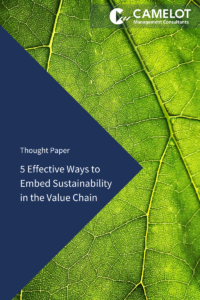In Europe as well as in China, chemical parks host the most important production plants of the chemical industry. Although the reasons for their emergence and their development paths were different, their destination might coincide due to the dynamics of the industry and the financial markets. In two blog posts, I will explain how chemical parks in China can benefit from Western experiences.
Part 1: Lessons learned of chemical parks in Europe
The concept of chemical parks originated in Europe in the 1990s. Chemicals sites had grown to production networks with multiple plants over decades. Infrastructure and services provided at those sites were internal departments of the site-owning chemical producer. As the plants consuming these services belonged to the same entity as the provider, there was no need for a legal separation of the two parts. This changed as European chemical companies started to focus their huge business portfolios on higher margin businesses by divesting commodity businesses and acquiring specialties. In that transformation, former single-user sites became multiuser sites as plants belonging to a specific business changed ownership. The resulting challenge was how to deal with infrastructure and service operations used by all chemical companies on site.
New business model
The answer was to transfer those activities to separate site operating companies which were either owned by the incumbent producer or by the major users on site. Thus, a new business model, the dedicated site operating company, was established. There were three major reasons for that:
- Cost and risk related to infrastructure and service operations were shared between major users either through ownership or through service pricing.
- By establishing more neutral and transparent service relationships, pressure was to be exerted on the site service organization to become more efficient.
- The site operating company was to render the site more attractive for new tenants, ideally by offering a “plug and play” environment to facilitate new plants without additional infrastructure investment.
Outcomes
Looking back, we can say that the first objective was achieved just by organizational nature of the new business. To achieve the second objective of optimizing cost was sometimes a long and painful way, as initial efforts often proved futile due to recessions and plant closures which burdened tenants with idle cost. But after two decades, site operators are now much leaner and more responsive to customer requirements. The third objective, to attract new investments, was the most challenging one. The construction of new plants shifted to East Asia and, fueled by shale gas, to North America while the chemical industry in Europe saw considerable restructuring. This caused underutilization in some chemical parks. On the other hand, building new plants outside chemical parks becomes more difficult due to environmental and safety regulation. So, instead of enticing new tenants, chemical parks are now primarily vying for replacement or enlargement investments from incumbent players. Though the entrances of chemical parks frequently show many company name plates, these mostly stem from spin-offs from established companies or investors who bought such businesses, rather than from truly new activities. But there were also some successful settlements from overseas investors, e.g. the establishment of a plastics compounding plant by Chinese player Kingfa at the Wiesbaden Chemical park (Germany).
Constraints
The risk of stagnating or even shrinking chemical production volumes in European chemical parks may also explain why some large chemical companies still tend to hold their shares of site operating companies. Their reluctance to completely release chemical park operations to independent players might seem paradox, as they willingly become tenants at chemical parks in East Asia. But Asia, and China in particular, are growth markets, whereas plant closures and related idle cost are a challenge for many European chemical parks. The incumbent players apparently prefer to manage those restructuring processes themselves instead of relying on third parties that might exploit their dependency on monopolistic infrastructure and services.
In my next blog post, I will describe the status quo of chemical parks in China and how they can benefit from the lessons learned in Europe.
We would like to thank Dr. Yorck Dietrich and Dr. Kai Pflug for their contribution to this article.

